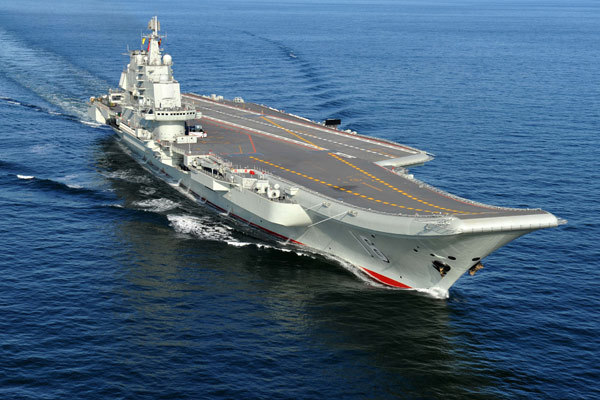Nation's military power grows but still trails behind
By Chris Peterson (China Daily) Updated: 2015-09-04 08:59
 |
|
China's aircraft carrier, Liaoning, has conducted 10 sea trials since August 2011. Photos by Li Tang / for China Daily |
China's victory parade in Beijing on Thursday gave military analysts and observers worldwide the chance to see the growth that has turned it into a strong country and an economic powerhouse. But China as a country has a long memory, with many still looking back to the 1930s when a politically fragmented country faced aggression and invasion from its powerful and militaristic neighbor, Japan.
As China's economic might has grown, so has its military capability, sending a message that China is prepared to defend its core interests, in line with President Xi Jinping's aim of national rejuvenation.
This week sees celebrations marking the end of the war against fascism. The wounds are still there - China still feels the current Japanese administration has never repented for Japan's occupation of the country and misery it inflicted on the Chinese people from 1937 to 1945.
Following the conflict with militaristic Japan, and for most of the post-World War II period, China's military was perceived as heavy on manpower but light on arms. But that has changed.
China is focusing on building up its navy, with the aircraft carrier Liaoning seen by many Western observers as the centerpiece even though it is still listed as a training and research vessel.
The Liaoning was acquired in a roundabout way from Russia via Ukraine with a hull and superstructure, but without any electronics and weapons systems in place. All those were incorporated in the ship through Chinese technological know-how, and US Defense Secretary Chuck Nagel toured the vessel in 2014, something that was impossible during the Cold War.

I’ve lived in China for quite a considerable time including my graduate school years, travelled and worked in a few cities and still choose my destination taking into consideration the density of smog or PM2.5 particulate matter in the region.











